Between 1987 and 2001, Kat Bjelland (vocals, guitar), Lori Barbero (drums), and Maureen Herman (bass) were one of the most bad-ass, pioneering acts of the alternative rock era.
A ferocious punk trio who recorded three proper albums: Spanking Machine, Fontanelle and Nemesisters.
Their recent reunion of sorts is one of the most exciting, promising things to happen in music for a long time; at least in part because I had expected nothing of the sort. The future seems up in the air at present, but the prospect of new material has been strongly hinted at.
When I was a young-to-mid teen, music was a religious experience; a series of holy revelations, one leading to another. Nirvana led also to Hole; and Hole led to Babes in Toyland, among others. I would give almost anything to go back and experience those revelations again.
There’s nothing quite like hearing Kat Bjelland’s odd, manic vocals for the first time and thinking ‘what fucking planet is this from?’
I still consider it a blessing that I was growing up when I was, just about old enough to be able to partake of what was an era of the most outstanding, rich music coming from all kinds of places. I mean I was kind of too young and a tad too late as well: I always feel like I needed to have been born three or four years earlier than I was, so that I could’ve been properly experiencing Nevermind in 91/92. And things like Babes in Toyland’s Spanking Machine, Fontalle and Peel Sessions as they were happening.
Nemesisters was the first Babes in Toyland album I heard when it actually came out (and then later sought out the earlier albums).
It was a curious, at times baffling, at times brilliant, record. One song in particular, ‘Ariel’, compelled and bewitched me, and Kat Bjelland seemed like a fascinating, enchanting, semi-mythical entity even before I saw what she looked like.
Kathleen Hanna (of Bikini Kill and Julie Ruin) credited an “amazing, life-changing” Babes in Toyland show as primary driving force behind Bikini Kill and even the riot grrrl movement itself. Hanna, herself an icon, has described Bjelland as “someone who has reshaped culture, allowing other women to run through the door her big voice kicked down”.
While I don’t like to talk about ‘image’, as it feels like it is detracting from the important thing being the music, Kat’s image was something extraordinary.
I’ve seen it described best as that of ‘a mistreated Dickensian orphan set on wreaking her revenge on the present day’.
Her battered baby-doll-like look, both sexual and seemingly innocent, both striking and messy, can be described as properly iconic. Coming to be referred to in music press as the ‘kinderwhore’ look, it was also shared by (or stolen by, depending on who you listen to) Kat’s one-time friend and collaborator Courtney Love.
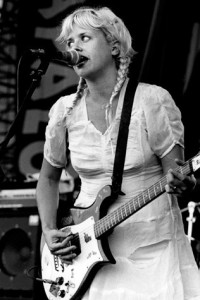
Kat herself is permanently a fascinating, compelling figure.
I love that the Rickenbacker 425 guitar that Kat played throughout the 90s and into the early 2000s was the very same guitar she had bought at the age of 19 in Portland (her first guitar).
But I don’t make the mistake of thinking Babes in Toyland is all about Kat.
As a killer three-piece outfit, each part of the trinity is essential in creating that whole.
While I’ve enjoyed the Katastrophy Wife material a lot, there’s a magic, almost slightly mystical, power to Kat fronting Babes in Toyland that is on another level.
I’ve often told people that, after Nirvana and Soundgarden (and possibly Blind Melon and The Doors), Babes in Toyland were probably my favorite band. Sure, they have a less impressive catalogue overall than a lot of other bands I love (because it’s less comprehensive – they only made three proper albums), and sure, you could argue that versatility wasn’t necessarily on display across those albums.
But for sheer visceral power, and sheer emotional and sonic punch, it’s hard to fuck with Babes in Toyland. Their sound, their sonic identity, was completely unique and utterly mesmeric.
At their best, their compositions could be remarkably simple, but would just knock the wind out of you with their sheer punch.
The raw, blistering power of Kat’s voice and dark, provocative lyrics, were also of course a key ingredient in the brew.
It almost seems insensitive to say it now, given what we know about Kat’s psycho-affective disorder, but I would’ve said it anyway if I’d been writing this twenty years ago: her vocal contrasts, often within the same song, were often like a musical enactment of a split personality, where she would (vocally) play the part of both angel and demon. It was an absolutely mesmeric effect on songs, for example, like ‘Mother’. Some of Kat’s vocal performances sound like exorcisms (the singing-in-tongues style bridge on ‘Mother’ takes this to an extreme, but it is more moderately present on numerous songs).
At times, it felt like Kat (on record) was a character she was creating.
While her vocal range couldn’t be said to be spectacular, what she did with her voice was spectacular. She would sing like an angel – and I don’t mean that in the cheap, cliched sense, but really, viscerally like someone who’d drifted off from a heavenly choir. But then she would sing, growl or scream like a deranged lunatic too.
And both were beautiful; but moreover, both – when combined and off-set – were utterly mesmeric.
Babes in Toyland songs are like compelling little sonic dramas. While I can think of a number of better ‘singers’ in the more obvious sense, I can’t think of anyone who was as compelling or dramatic as this, but yet in such an almost throwaway manner.
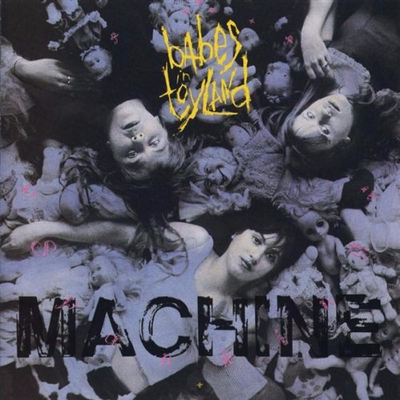
Spanking Machine (originally titled Swamp Pussy), recording in 1989 with legendary Sub Pop engineer Jack Endino in Seattle’s Reciprocal Recording, and was an insanely incendiary debut album: and manages to peak above the soundscape even in a time that saw debuts like Hole’s Pretty On the Inside.
While the achingly bittersweet ‘Pain in My Heart’ is arguably the album’s most standout track, the whole record is stellar and songs like ‘Lashes’ and ‘Dust Cake Boy’ can never be argued with.
So, in many ways, Babes in Toyland were already fully formed from the beginning, and had this incredible raw power and potency.
One of my favorite Babes’ songs in fact was ‘Arriba’ from the ‘House/Arriba’ limited Sub Pop single in 1990; it’s just a kick-ass pop/indie song with a fabulously discordant composition.
The late John Peel – who had broken both Nirvana and Hole to UK audiences long before America and MTV showed interest – was a massive fan of the album, citing it as his favorite record of 1990. While touring with Sonic Youth in 1990, the band were recorded for one of Peel’s legendary live sessions for BBC Radio 1. A second Peel Session the year after would later be combined with the first and released as the band’s second EP, The Peel Sessions, in 1992.
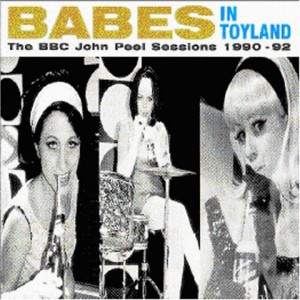
Fontalle, released in 1992, sold around 200,000 copies just in the US.
The band has explained the album’s name as referring to the soft spot on the top of a baby’s skull, as well as to a little fountain used by fairies. It is also the name of a magician consulted by Gilles de Rais, the real-life serial killer and child murderer who inspired the fairy tale “Bluebeard” (and who had once, extraordinarily, been a companion of Joan of Arc).
The process of recording the album is described in the book Babes in Toyland: The Making and Selling of a Rock and Roll Band, by Neal Karlen.
‘Bruise Violet’ (said to be an attack on Courtney Love) opens Fontalle like a fucking tornado, but is followed by an even better song, the brilliant ‘Right Now’. The verses are prominent with the tight rhythm section of prominent bass and brilliant, tribalistic percussion over which Kat virtually whispers her vocal like a stalking serial killer, before erupting into the more powerful, slowed down choruses that Kat howls out in that bone-shattering way only she does.
It is a simple song structure, but ‘Right Now’ stands as one of my very favorites Babes’ tracks.
But really the whole album is terrific. The single ‘Won’t Tell’ is probably as poppy as this band got at this stage, with Kat’s sweet, pixie like verse vocals met by the inevitable big-boned, scathing choruses: the video to ‘Won’t Tell’ is perfectly gothic (and very 90s, very Tim Burton esque) and still creeps me out.
But the whole album represents the band at the height of their three-way powers. ‘Mother’ perfectly displays the aforementioned split-personality style of some of Kat’s vocal performances; it punk-rocks along steadily for a while with barked out vocals, but then it veers off into a breathtakingly harmonious bridge with Kat providing the sweetest, most angelic vocal sounds you will ever hear on record anywhere – but then mutilates it by breaking into semi-psychotic, singing-in-tongues like a confused chaneller.
For me, Fontalle’s absolute highlight is also probably my No.1 Babes in Toyland composition: the track ‘Real Eyes’.
It is just brilliant. The track is primarily driven by Lori Barbero’s bad-ass drumming, but it is a moody, bitter diatribe showcasing Kat at her crazed, chaotic yet tuneful and soulful best. Her vocals on the choruses are the most darkly gorgeous thing you might ever hear; but she destroys us in the bridge with the most blood-curdling screams she has ever produced. You won’t hear screams like that on another record: Kat’s tonsils are something else.
Nemesisters, released in 1995, is considered by most to be the weakest of the three main albums; though it was the first album I was able to buy on release and not listen to retroactively. Babes in Toyland at their least solid are still endlessly listenable, however, and Nemesisters contains some gems. While ‘Sweet 69’ is probably their most radio-friendly, poppy song ever (and an addictive one, at that), a song like ‘Drivin’ is a fat, heavy piece of sonic excellence, with pounding drums, a relentless riff, combining with Kat’s repetitive vocal, to create a hypnotic experience.

Of two covers, one (a cover of Sister Sledge’s ‘We Are Family’) is questionable, while another (a knowing, funny, messy version of ‘All By Myself’) is irresistibly droll, with Kat putting the cheesy, popular song through her own unique, inimitable blender and coming out with something surprisingly discordant and lovable.
The album’s standout, in my opinion, is ‘Ariel’; a slow, evocative, moody track that sounds more like it belongs on Fontalle. Kat’s classic low-register vocals on the verses morph fluidly into dual harmony before rising to big, almost triumphal choruses. It is dark, angry, but tuneful and beautiful all at once, and a little twisted – essentially, a microcosm of everything that makes Kat and Babes in Toyland so special and so singularly unique.
That was the last major act of prime-time Babes in Toyland in that golden period that Kurt Cobain had once predicted would be “the last great wave” of rock music.
In the intervening years, Bjelland had been diagnosed with schizoaffective disorder. She wasn’t the only one who experienced traumas. Herman, having previously had problems with crack and alcohol, told Rolling Stone magazine she had been suffering serious depression and post-traumatic stress disorder after a gang rape, resulting in a pregnancy she had decided to go through with.
The band members had also drifted apart and were apparently no longer even in touch.
And Kat was living more or less in isolation, recalling in a recent interview “I had a period where I didn’t answer the phone for a really long time. Like nearly 15 years.”
What is also so endearing about them is that they clearly haven’t been living any kind of rock star lives in the past decade or so and in fact don’t appear to have been lingering on their punk n’ roll days at all. Kat did of course front Katastrophy Wife (or Kat-as-trophy-wife); but although that resulted in some really good music (which I reviewed here), it didn’t develop the same traction as Babes in Toyland.
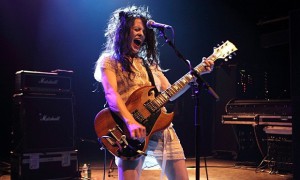
This recent interview in The Guardian paints a picture of three people who were virtually unaware of the burning desire among fans for them to come back; and drummer Lori Barbero describes herself as Luddite who doesn’t use the Internet or own a TV.
But through various arrangements and processes, the reunion started to take shape: and their return show was met with rapture and widespread excitement, which surprised even Kat. The reunited band played their second comeback show at The Roxy Theatre in Los Angeles, California on February 12th 2015; a show attended by Hole’s former Patty Schemel and Eric Erlandson, Brody Dalle (Distillers) and Donita Sparks (L7), with subsequent, highly hyped shows following.
It’s a great regret that I never got to see Babes in Toyland live back in those days. I was only 15 when Nemesisters was coming out; and although I was already getting into them at around that time, I didn’t have the funds to go see them when they were in London. There was actually one gig in particular, which I think was at the London Astoria, that I wanted to go to but couldn’t. I’ve watched all the live videos, however, and You Tube has also become a great catalog for bands like Babes in Toyland and their old concerts.
Hopefully this time around, I can catch them properly at last.
Related: ‘Katastrophy Wife’s ALL KNEEL: 10th Anniversary Re-Release‘…

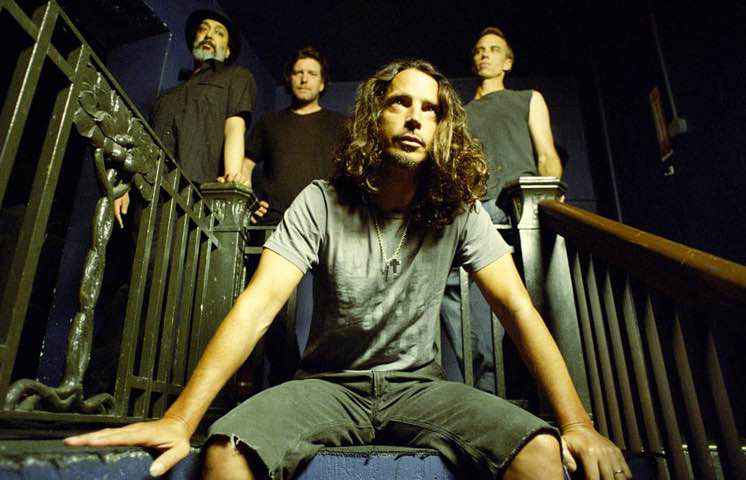


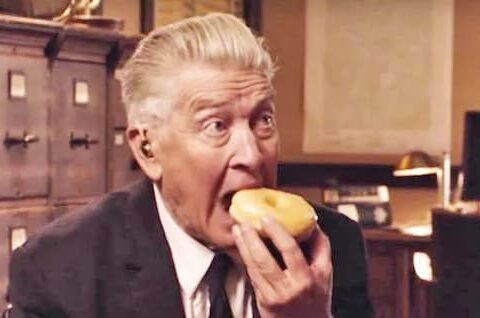
Thanks for that. I am impressed that you even know this band, given your age and the fact that they never achieved commercial success. I loved them around 1993 and was lucky enough to see them live in Melbourne in October 1993 . They were great. I also met them briefly when I conducted an interview with them for Melbourne Community Television. It was a completely unremarkable maybe 15 minute interview, it went ok. They were nice people. I do remember that Kat was extraordinarily beautiful. and after the interview I was allowed to stay for their soundcheck. I was shocked at how good they were live. (I went to the gig later, but the soundcheck was the first time I heard them play).
There was an EP from around that time called Painkillers, and while I am a big fan on Fontanelle , I think maybe their best song (my favourite at least) was a track called Istigkeit from that.. It still sounds great.
Istigkeit! I know that song and you’re right: it’s stunning.
I can’t believe you not only interviewed them, but saw their soundcheck! And you’re so casual about it, like it’s not a big deal.